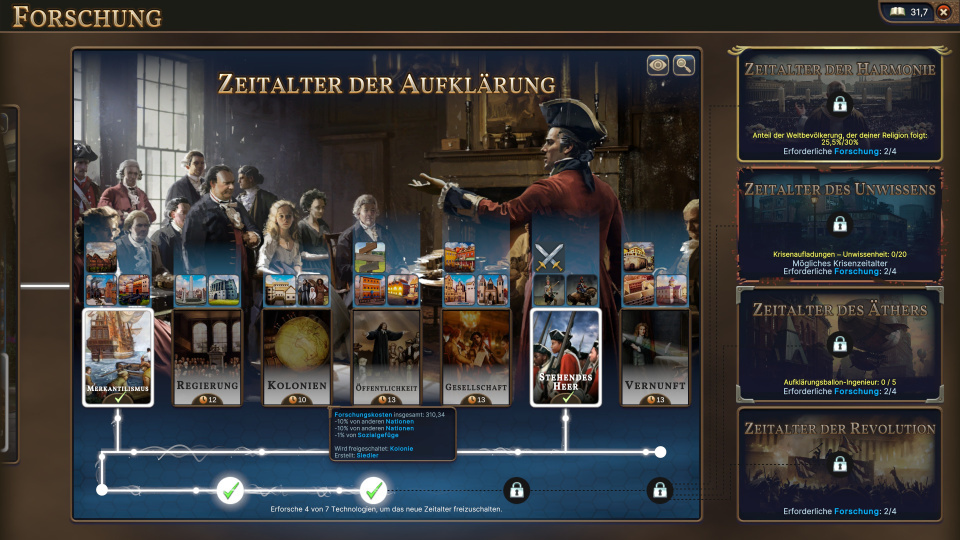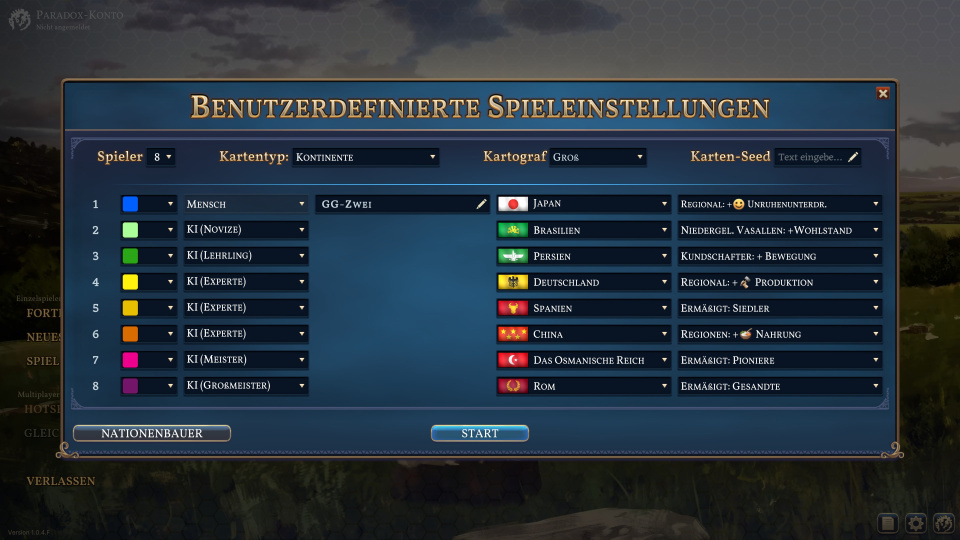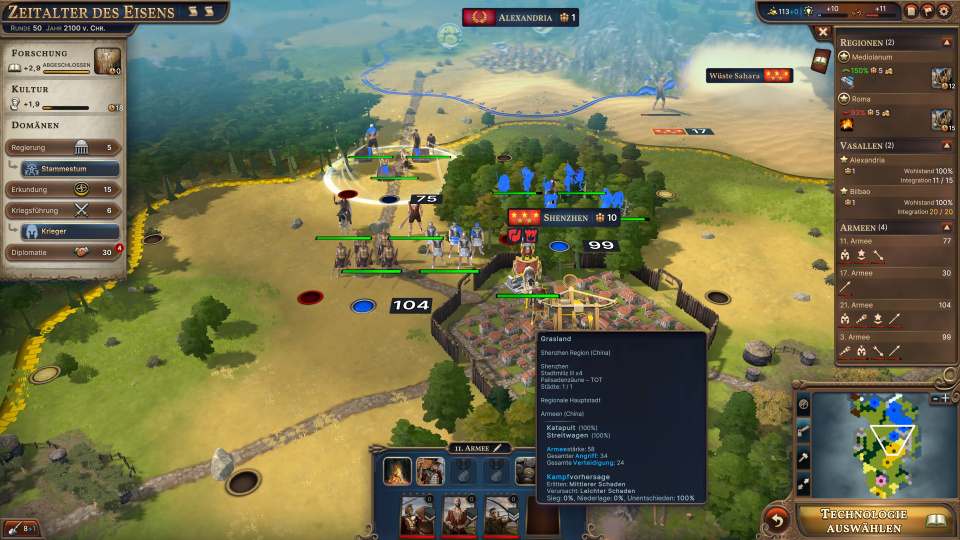Teaser
Each new round is always the penultimate one until dawn. Jörg Langer had a lot of fun with ages and domains in this 4X game. But there are also nerve points, including strong Anno bonds.
Advertisement
And I don't have to explain the 4X principle to everyone else 4,000 times, do I? So what. That's why it should be said that, in principle, a lot of things work in Millennia exactly as you would expect. From now on I'll concentrate on the special features of other representatives of the genre, and what I like and what I don't like about this game from the creative pen of Ian Fisher (previously largely at Age of Empires 2 and Age of Mythology involved).
 |
| We are in the age of enlightenment. Once we have researched four of the seven technologies, we can choose one of the three eras on the right as a research project – provided we or another nation do not trigger the “Ignorance” crisis era. |
Positive: The Ages
When a game is called “Millenniums,” it's a subtle hint as to what's important to it. The ages actually play a big role in Millennia. In each of these there are six or seven research levels. Once you have researched three (later: four), you can research the next age. Special feature 1: This then immediately applies to everyone in its global effects – but the other nations still have to “discover” it themselves in order to be able to research the technologies there. Special feature 2: You have the choice between several eras, with different effects. Of course, the first thing to do is to discover an age – only this nation receives the discovery advantage, and the alternative ages that may also be currently being “researched” are omitted for this game.
Special feature 3: When a nation triggers certain triggers, an age of crisis occurs. And that also applies to everyone! For example, anyone who kills six or more units of other nations in the first era (barbarians and rebels do not count) triggers the Age of Blood. Anyone who later fails to comply with certain hygiene standards heralds the age of epidemics. Or that of ignorance. The effects are considerable: the entire map turns reddish, and negative effects make life difficult for all nations. During the Plague Age, for example, yellow “disease” symbols repeatedly appear next to your cities, which you should “click away” either by using the plague doctor or investing the labor resource (which, by the way, is pretty annoying in the long run).
The ages are a great idea and virtually guarantee that no two games will be exactly the same. The fact that the first nation sets the era for everyone makes the decision between “I'd better get one or two more important research” and “I forego short-term advantages and research the next era” difficult.
Advertisement
 |
| These are all the setting options at the start of the game. The nations only consist of a color and a bonus. |
Negative: Hardly any setting options
Except for the failed one At The Gates I've never experienced a 4X game that offers me so few setting options for a game. Already Sid Meier's Civilization let me change umpteen parameters in the early 90s, but Millennia? I can choose the number of computer opponents and their “nation” (I'll get to the quotation marks later), as well as the map size in three levels and the map type – land mass, two continents or island world – that's it.
And now for the quotation marks: There are actually no nations in Millennia. Factions of different colors, yes, but not what has existed since the beginning of the genre, namely races with different leaders, special rules (or at least buildings) and one or two special combat units. Civilization VI certainly represents the gold standard in terms of race diversification and presentation, but Millennia doesn't even appear on the scale. Are the peoples really different at all? Yes, the color is different. And each has a generic advantage, so the Japanese are better at suppressing resentment, the Zulus start with one more combat unit. In the “Nation Builder” you can build your own “nation” from just such an advantage, a village graphics set and a city graphics set. That's it.
So every faction in the game can do the same thing, you're never looking forward to the Roman legionnaires or the German tanks or the American jets – and diplomacy consists of text windows that don't even contain a portrait picture. Anyone who remembers masterpieces like Master of Orion or Alpha Centauri remembers, understands how much atmosphere and player motivation is lost here!
 |
| After 50 rounds, our Romans already have two regions and two vassal regions (see bar on the right). We only have four out of six domains (bar on the left), but recently our armies can consist of up to four units (below). |